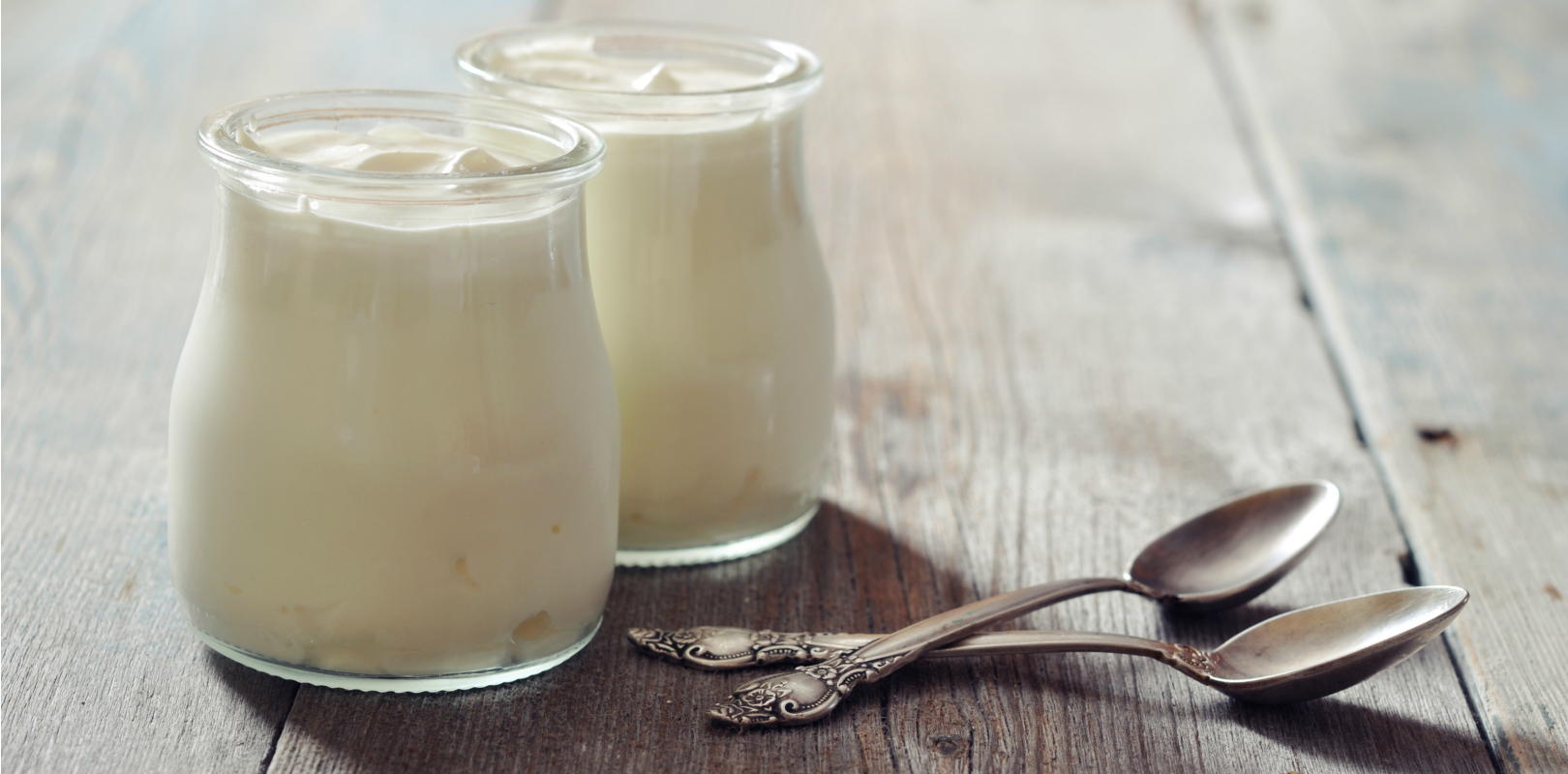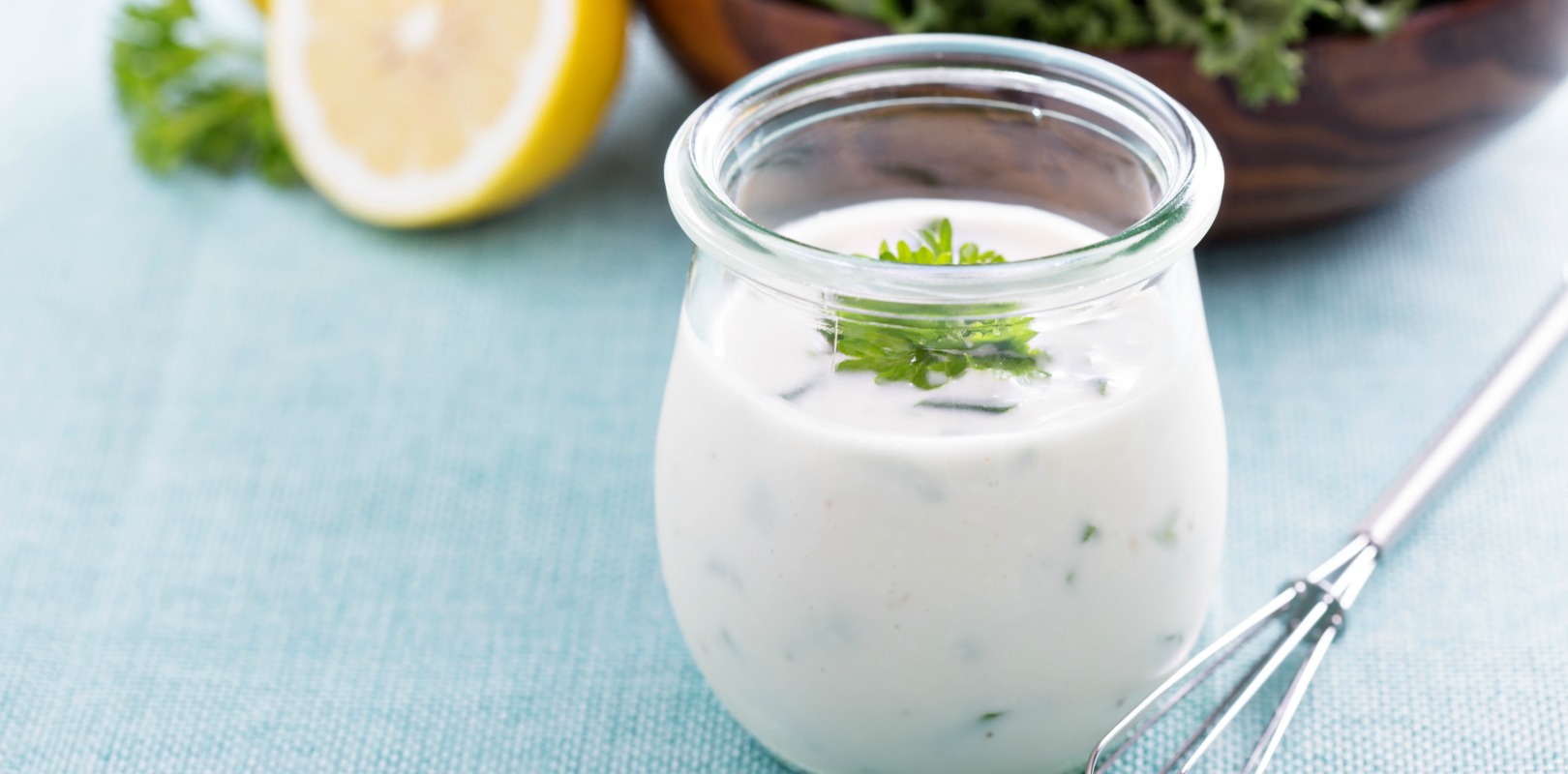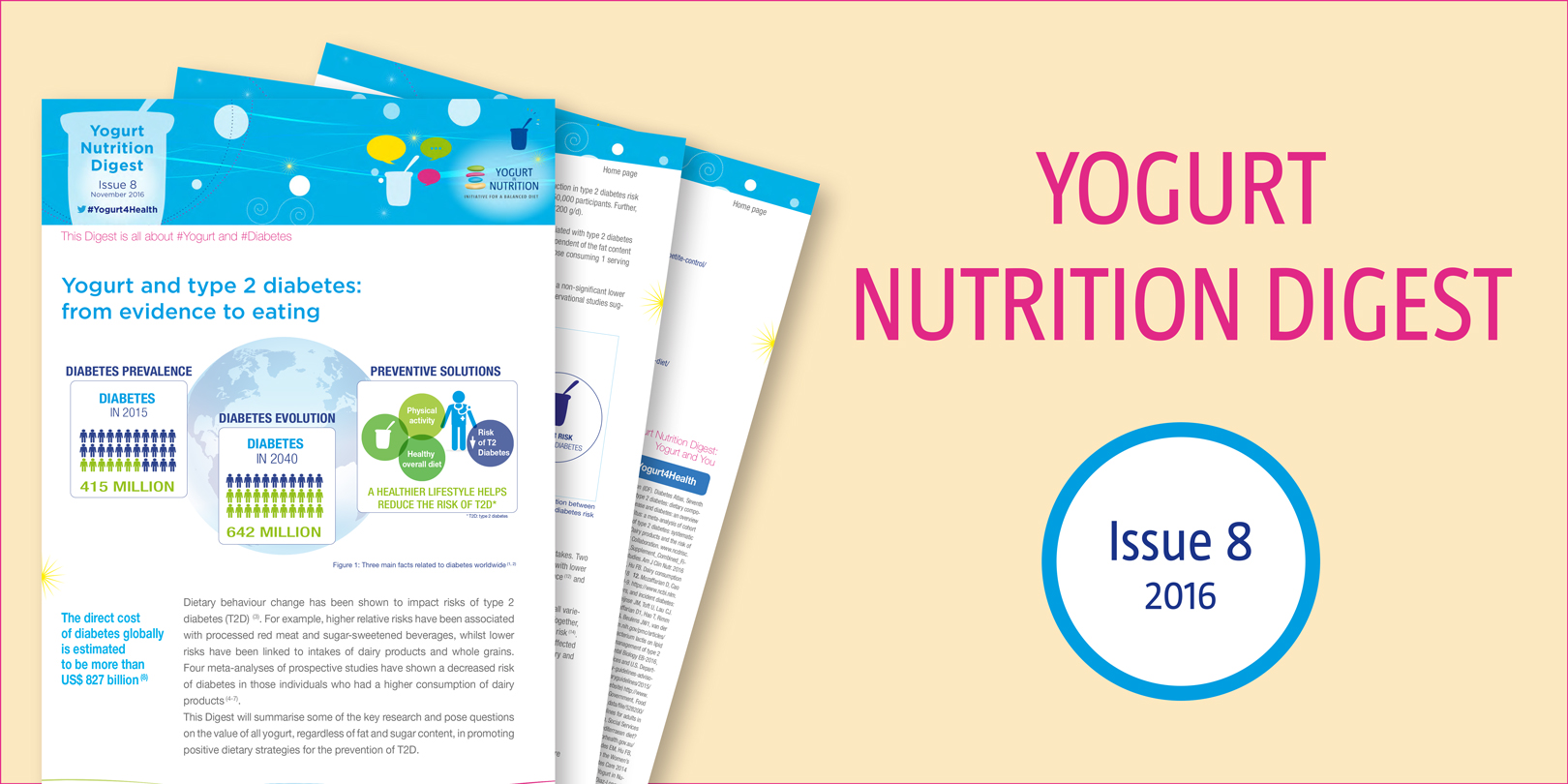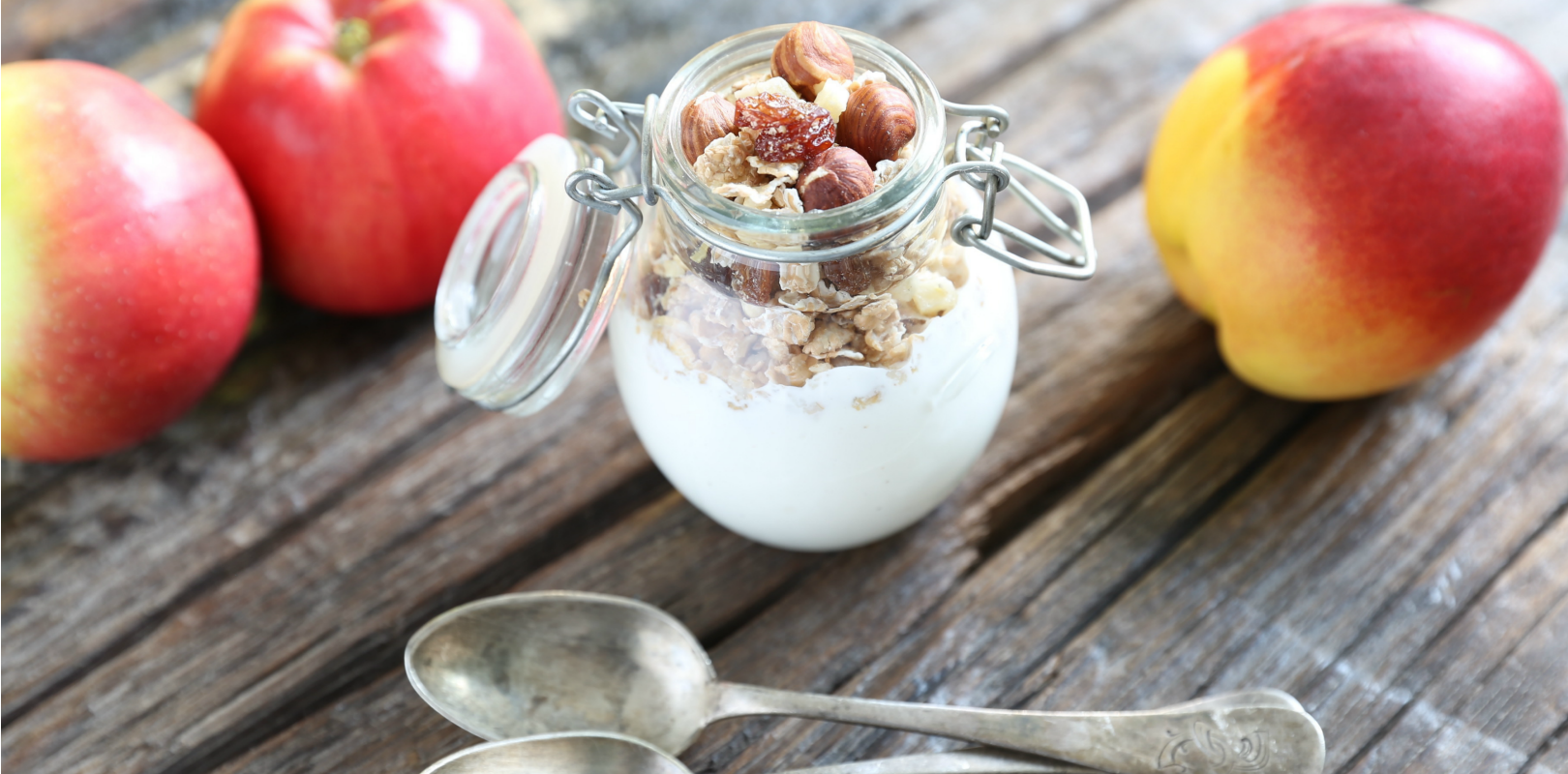14 Dec 2016
•
1 min read
2016 Best of yogurt publications

Related posts
Table of contents


Fermented foods represent about one-third of the foods in the human diet. The goal of fermentation in these products is to improve the preservation, taste, structure or nutritional value of the food. In the present study, the authors investigated the relationship between total and subtypes of bacterial fermented food intake (dairy products, cheese, vegetables and meat) and mortality due to all causes, cancer and CVD in the prospective European Prospective Investigation into Cancer and Nutrition-Netherlands (EPIC-NL) cohort.
These data come from the Netherlands cohort of the European Prospective Investigation into Cancer and Nutrition (EPIC), a European wide prospective cohort study of the relationships between diet and cancer, as well as other chronic diseases, coordinated by the International Agency for Research on Cancer (IARC). Hereby, 34 409 Dutch men and women from 20 to 70 years were followed for a mean period of 15 years. Intakes of total and subtypes of fermented food (dairy products, cheese, vegetables and meat) were evaluated at baseline with a validated Food Frequency Questionnaire.
For analyzing the results of the mortality, the authors adjusted the data for age, sex, total energy intake, physical activity, education level, hypertension, smoking status, BMI, and consumption of fruit, vegetable and alcohol. The results showed no association between total fermented food intake and mortality, due to all causes, cancer or CVD. Between subtypes of fermented food, none was consistently related to mortality, except for cheese, which was moderately inversely associated with CVD mortality, particularly stroke mortality. The absence of an overall effect of fermented food with mortality challenges the theoretically negatives effects of animal fats, and this call for more studies on the specificity of bacterial fermented food. In conclusion, intakes of fermented dairy foods and cheese were not associated with mortality due to all causes, cancer or CVD in this Dutch cohort. Whether other fermented foods in the Dutch diet play an important role in mortality is unlikely based on the results of the present study.
To learn more, read the original article.

“Cette recette me vient d’une bonne amie. Je raffole du poulet général Tao, mais la friture irrite mon intestin et je suis souvent ballonné. Cette amie m’a convaincu d’essayer sa recette de poulet pané aux céréales de riz soufflé. Depuis ce temps, je ne jure que par cette recette et je change parfois les épices, selon mes envies.” Hubert Cormier
· 250 ml (1 tasse) de yogourt grec nature
· 10 ml (2 c. à thé) de cumin
· 2 grosses poitrines de poulet (environ 300 g) en morceaux de 1 pouce (2,5 cm) d’épaisseur
· 500 ml (2 tasses) de céréales de riz soufflé (de type Rice Krispies™)
1. Dans un bol, mélanger le yogourt, le cumin et le poulet. Couvrir d’une pellicule plastique et laisser mariner de 2 à 3 heures au réfrigérateur.
2. Préchauffer le four à 400°F (200°C)..
3. Mettre les céréales de riz soufflé dans un sac hermétique. À l’aide d’un rouleau à pâte, écraser les céréales sans en faire une poudre.
4. Déposer la panure dans une petite assiette et y rouler les morceaux de poulet, un à la fois.
5. Déposer le poulet sur une plaque de cuisson et enfourner 15 minutes ou jusqu’à ce que la panure soit bien dorée. Retourner à mi-cuisson.
Le conseil d’Hubert : Vous pouvez ajouter des pacanes ou des noix de Grenoble concassées dans la panure de riz soufflé pour obtenir une texture encore plus croustillante.
Calories : 206
Lipides : 5,1 g
Gras saturés : 2,8 g
Cholestérol : 55 mg
Sodium : 236 mg
Glucides : 17 g
Fibres : 0 g
Protéines : 21 g
Jeune et dynamique nutritionniste, Hubert Cormier se démarque sur bien des plans dans le domaine de la nutrition qui a été trop longtemps perçu comme un domaine exclusivement réservé aux femmes. De pair avec la poursuite de ses études doctorales en nutrition, Hubert est aussi conférencier, blogueur et ambassadeur de marques. En plus de démystifier et de démocratiser la nutrition, Hubert réussit le pari de faire rimer alimentation équilibrée et plaisir de manger.
Instagram: @Hub_Nutrition
Twitter : @Hub_Nutrition
Facebook : Hubert Cormier Nutritionniste
Sur le site d’Hubert Cormier

“This recipe comes from a good friend of mine. I love General Tso’s chicken, but I don’t digest fried foods well; they often make me feel bloated. My friend convinced me to try her version of the dish, which su rp risingly uses crushed puffed rice cereal for the breading. I’ve never looked back! The only elements I play around with are the spices,according to my whims.” Hubert Cormier, RD.
4 servings – preparation time: 5 minutes – rest time: 2-3 hours – cooking time: 15 minutes
Ingredients
1 cup(250 ml) plain Greek yogurt
2 teaspoons (10 ml) ground cumin
2 large chicken breasts (about 5 ounces/150 g each), cut in 1-inch (2.5 em) cubes
2 cups (500 ml) puffed rice cereal (such as Rice Krispies)
Method
Nutritional value (per serving)
Calories: 206
Total fat: 5.1g
Saturated fats: 2.8g
Cholesterol: 55 mg
Sodium: 236 mg
Carbohydrates: 17g
Fibers: 0g
Protein: 21g
Biography
Hubert Cormier is a registered dietitian and is currently enrolled in a doctoral program at the Institute of Nutrition and Functional Foods in Quebec City. In 2015, he was presented with the Annual Merit Award in Nutrition–Young Professionals, a prize given by his professional body in recognition of outstanding devotion to the field of nutrition. He has written three successful books on nutrition in French. The author lives in Quebec City, Canada.
Instagram: @Hub_Nutrition
Twitter : @Hub_Nutrition
Facebook : Hubert Cormier Nutritionniste

The role of the microbiota in health and disease development receives more and more attention. It is known that diet, but also probiotics can both influence the intestinal environment. In this study, Odamaki et al. showed that a yogurt, supplemented with a probiotic strain and consumed when following an animal-based diet period, can play a role in maintaining a normal microbiota composition.
In total, 33 subjects were enrolled in an open, randomized, parallel-group study and allocated into three groups. All of the subjects followed first a five-day period of animal based-diet, and then a balanced diet for 14 days. The first group received each day during both periods (animal-based diet and balanced diet) 200 g of yogurt, supplemented with Bifidobacterium longum; the second group received the yogurt during the balanced-diet period only, and the third group (control) did not ingest yogurt during the experiment. Fecal samples were collected before and after each period.
The analysis showed significant modifications, caused by the animal-based diet in both groups that didn’t received the probiotic yogurt during this period, with some strains increasing in the gut microbiota and other decreasing. But for the group that ate daily the probiotic yogurt during the animal-based diet, except for the Ruminococcus, these changes were not observed. In other ways, this suggests that the consumption of probiotic yogurt, during the ingestion of a meat-based diet, can play a role in maintaining a normal microbiota composition.
To learn more, read the original article.

Dietary behaviour change has been shown to impact type 2 diabetes (T2D) risks: lower risks have been linked to consumption of dairy & whole grains. Four meta-analyses of prospective studies have shown a decreased risk of diabetes in consumers with a higher dairy intake.

More and more studies report that yogurt consumption is associated with healthy dietary patterns. Here, Panahi et al reviewed the evidences and concluded that yogurt consumption may be considered today as a signature of a healthy diet.
Even though the general belief is that a single food can’t produce sufficient effects to change metabolic profile, Panahi et al. note that recent studies have emphasized specific beneficial effects of yogurt consumption for different health aspects, among which body weight and glycemic control. Frequent yogurt consumption is associated not only with a higher nutrient intake, but also an improved diet quality: frequent yogurt consumers tend to be more compliant with dietary guidelines, given that they eat more fruits and vegetables, whole grain, and dairy than low or non-consumers.
The yogurt contribution to better metabolic health could be explained, as suggested by recent epidemiological and clinical evidence, by its effects on the control of body weight, energy homeostasis and glycemic control. But in addition to the direct effects of yogurt, other indicators of a healthy lifestyle are associated with the consumption of this food category. Yogurt consumers are more physically active, smoke less, have higher education level and knowledge of nutrition, compared to non-consumers. That’s why the authors introduce this concept of healthy diet signature for yogurt consumption, through its nutritional content, impact on metabolic health, including the control of energy balance, body weight and glycaemia and its relationships with healthier behaviors and lifestyle factors.
To learn more, read the original article.

Higher intakes of proteins, derived from plant-based foods and certain animal-based foods, including dairy proteins, have been associated, in observational studies, with a lower risk of type 2 diabetes (T2D). In this review, Kevin Comerford and Gonca Pasin highlighted the emerging evidences of glucoregulatory effects of dairy proteins and dairy matrix, which could explain a preventive effect on T2D risk.
The protein quantity and quality of foods are contributing factors to their effects on glucose control, but foods are much more complex than a single nutrient, or even the sum of their individual nutrients. Many dietary factors, nutritive and/or bioactive, mediate the relationship between food intake and health. This is particularly the case with the food matrix of dairy products.
It is well documented that protein and amino acid ingestion can increase the ability to secrete insulin, and this effect is particularly important in subjects with T2D. But the ability to modulate insulin secretion and insulin sensitivity varies with the source of protein, and there are many more factors involved in glycemic management than just insulin, such as incretin hormones (hormones synthetized by the gut). Among animal-based based proteins, certain subtypes shows negative, and other shows neutral or positive effects on T2D risk. The review pointed out that a higher intake of dairy products (such as milk, yogurt, cheese and whey proteins) consistently shows a beneficial relationship with glucose regulation and/or T2D risk reduction.
Intervention studies have provided evidences that dairy proteins have more effects on insulin and incretin secretion compared to other animal proteins. But these observations are not the only aspect involved in the potential protective effect of dairy on T2D. Besides, the authors underlines the food matrix of dairy products, which content several components which exerts beneficial effects on glucose control, insulin secretion, insulin sensitivity and/or T2D risk. These components are among others: calcium, magnesium, potassium, trans-palmitoleic fatty acids, and sugars with low-glycemic index. Finally, the authors also speculate that fermentation and fortification with probiotics and vitamin D may significantly contribute to improve glucose control effects of dairy foods.
In conclusion, the authors suggest that these results demonstrated that further focus on product type (e.g., milk, cheese, yogurt, whey protein), product characteristics (e.g., full-fat, low-fat, fat-free, fortified, fermented, etc.) and protein properties (e.g., BCAA content, EAA content, bioactive proteins and peptides) is necessary to better determine a product’s glucoregulatory abilities.
To learn more, read the original article.

In the framework of the Danone Chair « YOGURT: A LONG-STANDING FOOD TO HELP RESTRAIN MODERN DISEASE » from the Belgian Danone Health Institute, Prof Angelo Tremblay will present recent data on how regular yogurt consumption may help restrain modern disease. Watch the livestream on Tuesday November, 22nd from 5:30 PM until 6:45 PM!
Angelo Tremblay is a PhD at the Department of Kinesiology at the Laval University in Canada and an expert in obesity research. In the context of diabetes prevention, he will review yogurt as a signature of a healthy diet and lifestyle and a long-standing food to help restrain modern disease.
Recent data suggests that the average yogurt consumer seems to be a more physically active person, less likely a smoker, having a healthier diet… So it seems that yogurt consumption may be considered as a signature of a healthy diet through its nutritional content, impact on metabolic health, including the control of energy balance, body weight and glycemia and its relationships with healthier behaviors and lifestyle factors.
Wanna learn more? You can follow the webinar via livestream on the following link:
http://www.danonehealth.be/benl/instituut-danone/livestream

We know yogurt prevention of diabetes and diabetes management require particular attention with regard to diet. In the context of the Diabetes Awareness Month, Registered Dietitian and Diabetes Educator Toby Smithson explains how to compose a healthy diabetic plate and the role yogurt can play as a part of it.
A healthy plate for people with diabetes includes three elements. First we need protein, which can be either meat, poultry, dairy like cheese and yogurt, fish or soy. Then the diabetic plate should include carbohydrate such as whole grains, fruit, starchy vegetables, breads and cereals. And finally, we want to have healthy fats like olive oil, vegetable oil, margarine, avocado or nuts. Yogurt fits on the healthy plate counting as a source of carbohydrate and a good source of protein if using Greek yogurt.
In my opinion the main prevention of diabetes benefit with yogurt is weight management. Recent studies have shown those who consume yogurt as part of a healthy diet were associated with less weight gain over time. This is an important prevention factor for developing type 2 diabetes. Specifically, study participants who consumed three or more servings of yogurt per week had smaller waist circumference gain compared to those who consumed one serving yogurt per week.
I recommend my patients with diabetes to have Greek yogurt daily. This is great for osteoporosis prevention and for the combination of nutrients to help stabilize blood glucose levels. Yogurt is a food with extra benefits. While it is mostly known as a good source of calcium and potential vitamin D, Greek yogurt contains carbohydrate and protein which makes it a great food to have at meal time or as a snack.
Toby Smithson is a Diabetes Lifestyle Expert and the founder of DiabetesEveryDay.com, an online guidance and support resource for people with diabetes. Smithson is a registered and licensed Dietitian, certified diabetes educator, and national spokesperson for the Academy of Nutrition and Dietetics. She holds a Masters of Science in Nutrition and Wellness from Benedictine University.
Her passion is sharing strategies and tools for self-managing diabetes, mixing professional expertise with personal experience from successfully managing her own diabetes for more than 48 years. Smithson is the co-author of Diabetes Meal Planning and Nutrition for Dummies (John Wiley and Sons 2013).

